Hi Readers! A blog is seriously over-due, last but not least I hope, I have an update from my headwaters experience thus far! I feel like I haven’t stopped travelling and/or reading… but its all good! 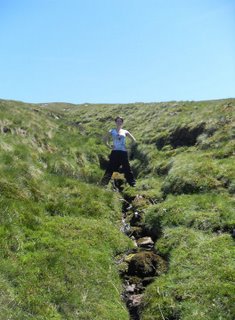
I left you with an upcoming trip to Wales which was back in June-wow how time flies, pun very much intended! This was a mini adventure road trip for Willie, Louis and I, with many destinations and stop-offs on the way! First was looking for a rare mayfly Potamanthus luteus in the river Dee which requires a voucher specimen for records… after various attempts to get into the river but less than 30minutes kicking around, there it was in all its glory! Meanwhile I fought off the hay-fever on the bank, but was soon happy with a game pie and pint of this, that or was it t’other? Wonderful! The following day was the journey to Aberystwyth, and the University there. Who can forget the man projectile vomiting on the high street at mid-day?
We’d set up a meeting with Dr. John Gee (that was not him I must stress!) who specialises in research on ecology of freshwater invertebrates, specifically adults and their response (dispersal) as a result of catchment change. Very informative and was useful in realising what was realistic and achievable within a 15 month timescale.
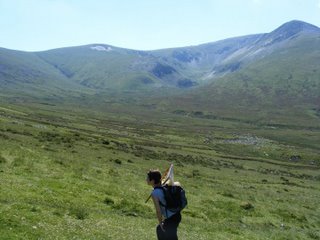
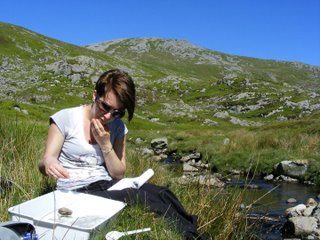
Next was an unreal day spent up, or coming down Aberfalls I should say! We were on the search for Louis’ favourite mayfly Ameletus inopinatus. A lesson from this day – when Louis offers you sun-cream on several occasions, do not decline, you do burn! My rucksack had pulled my t-shirt to one side all day, leaving me with a lop-sided tan line – joy! The scenery atop the mountain was breathtaking, I like this headwaters stuff me!!
The journey home took us via the World Museum Liverpool, this was an opportunity foremost to see their collections in the behind the scenes Entomology department, really fascinating, most memorable was the world’s largest moth (one wing was the size of my palm!) and also getting to chat to the curators, amongst others. Of course we had time to explore the other floors full of interactive displays and an aquarium!
Barely back in Glasgow and it was on to Edinburgh to do some electro fishing on the Water of Leigh. This was my first time properly putting what I’d learnt on the course into practice. Netting was slow and frustrating on the first day, perhaps more so to my peers, the technique soon came up to speed and having the correct handle length on your bucket is vital! When it comes to backpacking, apparently I am NOT ambidextrous! This is no fun when you keep leaning too far and tripping the tilt switch. So with this huge square box on your back for over an hour, taking it off – you feel lighter than a feather! I had a fantastic time in Edinburgh, meeting the Bailiffs of the river, learning fish ID; I thoroughly enjoyed the electro fishing… we even started a song, mostly a mock of how excited I got at the sight of anything that moved! Not to mention we got several stares/laughs in Edinburgh city centre, whilst donning the chest waders – how rude they’re oh so fashionable, Gok would be jealous!
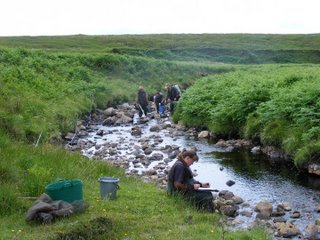
Off to the Isle of Jura, my first encounter with the Hebrides! This trip was fantastic, more electro fishing and some gill netting! This island had so much to see, the “paps of Jura” a deer or highland cow at every turn, herons, and porpoises to name a few. We sampled all sorts of fish, grayling, salmon, brown trout, lamprey, eels, stone loach and bullheads. I didn’t want to leave! But back to reality at the foundation and it was time to start thinking about my project design! Below: The Clyde River Foundation model midge nets 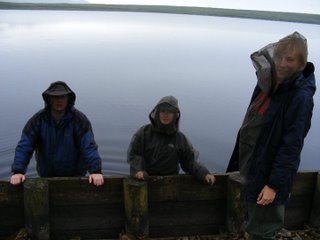
Willie and I took a trip down to Newcastle, to pick the brains of another innocent victim who would know a thing or two about headwaters! Prey took the form of Prof. Malcolm Newson, Director of Tyne Rivers Trust. We met him in the middle of nowhere, and took a tour of some different landuses that affect headwaters streams with the Tyne catchment. This began with Kielder Forest, England’s largest forestry plantation. We went into the depths where there was a flow and sediment gauge which had been there for years monitoring the effects of the silviculture on hydrological and sediment dynamics. We also had a look at where there had previously been open cast mining activity, covered up so discreetly you would never had known. Groups had come to survey the vegetation and carry out bird counts since the recovery but how had they affected the ecology of the streams that flowed through them? No one had looked into it….hmm the plot thickens!
The next few weeks were spent with my nose in scientific journals, wondering and trying hard to take in as much as possible and attempting to decide what on earth I was going to study!! Amongst this was a trip up north with Louis on his “Hot Water” adventure which would take us to Caithness. One highlight – meeting the man with no shoes, walking the length of the UK barefoot for charity, simultaneously ludicrous and brilliant! Ha!
Soon enough it was Big on the Beach held down in Ardrossan, loved meeting the two latest additions to the Natural Talent experience, Meryl and Miss. Gwendolyn. The event took the form of introducing the biodiversity of the west coast to members of the public, particularly children, who didn’t realise that such fascinating creatures were found in their local area. Highlight – glittering John and Craig’s faces! Haha suckers, never trust an NT apprentice!
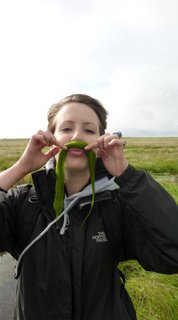
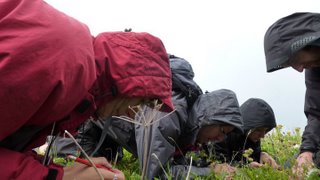 UIST! Here we all come! Keiren and John’s baby! Keiren did a fantastic job showing off his Machair skills and lack of play-do moulding ones! Our trip to Balranald Nature Reserve consisted of pond dipping, moth trapping, Machair guided walks, plant, bird, fungi, wildflower ID, seal spotting, beach parties, bonfires… oh no wait that never actually happened did it Craig? The list goes on! We recorded over 200 species on our 4day bioblitz and the media coverage was extremely positive, with much reference to the successes of 25 year old Mr. Jones 😉
UIST! Here we all come! Keiren and John’s baby! Keiren did a fantastic job showing off his Machair skills and lack of play-do moulding ones! Our trip to Balranald Nature Reserve consisted of pond dipping, moth trapping, Machair guided walks, plant, bird, fungi, wildflower ID, seal spotting, beach parties, bonfires… oh no wait that never actually happened did it Craig? The list goes on! We recorded over 200 species on our 4day bioblitz and the media coverage was extremely positive, with much reference to the successes of 25 year old Mr. Jones 😉
Well it was back to project proposal once the excitement of the Uists was all over! This took me to the Macaulay Land Use Research Institute for some inspiration, based in Aberdeen. Our Seaweed apprentice Ruth put me up for 3 nights which was really great of her, thanks Ruth! I went to spend a couple of days with one of their researchers Mrs. Jenni Stockan. One of her current projects is looking at the behaviour of Carabid ground beetles in response to differing riparian management in the Tarland area. Day one was spent radio tracking these beetles! Yes you read that correctly, the technique involves an adaptation of avalanche victim detectors in ski resorts! The next day I planned to spend some time with Ruth at her office at SEPA; that day luck was on my side! One of her colleagues was about to start some lab work involving the digestion of diatoms (algae) this is a 3-4 day process, involving: your preserved sample, lots of hydrogen peroxide and a centrifuge, some of time later and various complicated steps in between, you have a slide of diatoms ready for counting and ID! Phew! 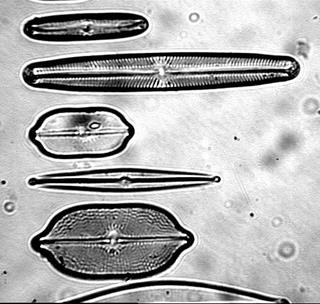 I had to come back on the Friday to see the final few stages, but I was so grateful of the demonstration and advice that SEPA had to offer and they loaned me a book! Woo! Time very worthwhile spent! On my second day with Jenni at McCaulay we had a tour of the institute; they had every kind of control room invented, freezer, chiller, 30 degrees, light, dark, humid…! In the afternoon, Willie joined us to do a bit of talking, he loves to talk!
I had to come back on the Friday to see the final few stages, but I was so grateful of the demonstration and advice that SEPA had to offer and they loaned me a book! Woo! Time very worthwhile spent! On my second day with Jenni at McCaulay we had a tour of the institute; they had every kind of control room invented, freezer, chiller, 30 degrees, light, dark, humid…! In the afternoon, Willie joined us to do a bit of talking, he loves to talk!
That readers brings me more or less up to the present day…relief! Well almost! A blog on recent events in the life of a headwaters apprentice will definitely precede a little sooner, as my memory can’t stretch any more!
Lesley
